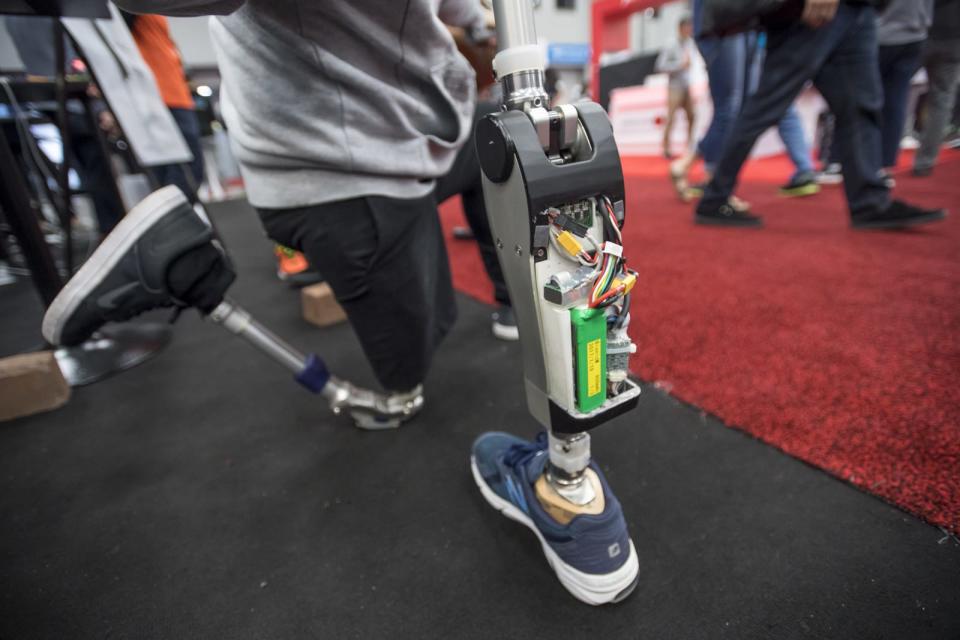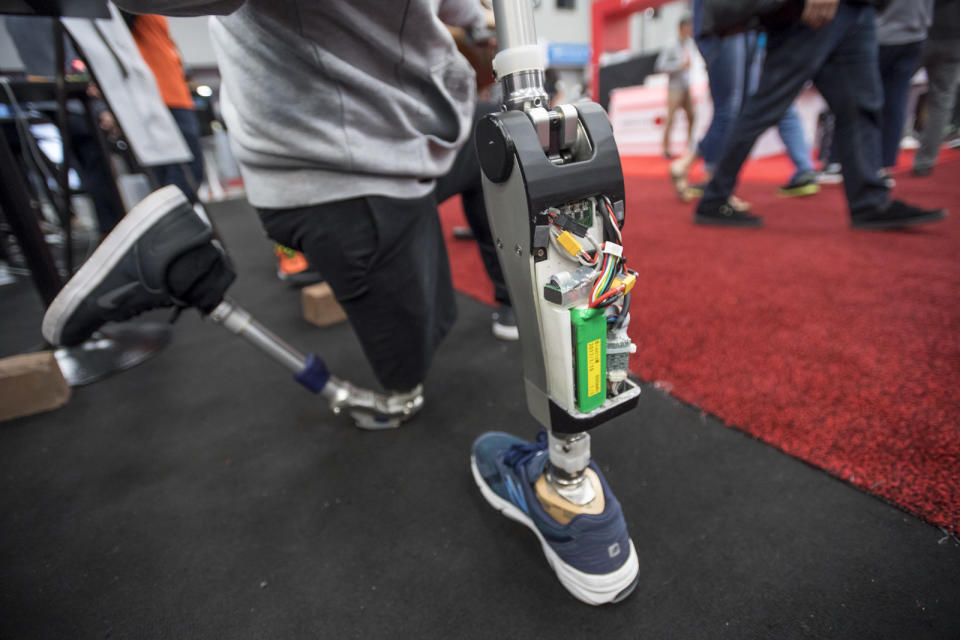AI-tuned robotic knee helps amputees walk within minutes
You wouldn't need to spend hours adjusting prosthetics.
Amputees who receive robotic limbs can't usually start using them right away. It typically requires hours of manual tweaks to adapt to their particular movement styles, and they may need to come back for more if anything changes. Soon, however, they might only need the briefest tweaks to get moving. Researchers have crafted an AI system that can tune a robotic knee (not pictured) to allow walking on level ground within 10 minutes. It uses a trial-and-error algorithm to recognize patterns in sensor data, set initial safety limits, and learn patterns that match stable, smooth walking motions.
The achievement is no mean feat due to the inherent limitations of training a system where humans are physically attached. Where AI can usually take as much time as it likes to master a new field, amputees may only have 15 to 20 minutes before they have to stop. You also can't put wearers in danger. A fall might provide useful data, but it wouldn't be pleasant.
This is far from ready for real-world use. Among other challenges, the scientists would need to verify that this works with inclines, stairs and rough terrain. It's also wired, so amputees still need to visit the lab. Even so, it could be a breakthrough. Amputees could spend less time in clinics and more time enjoying their freedom. And if there's ever a wireless version, patients might not need to come back -- they could tweak prosthetics when it's convenient and carry on with their day.


